JIMMY SMITH / “Jimmy Smith Mixtape”
It goes like this: Jimmy Smith = jazz organ.
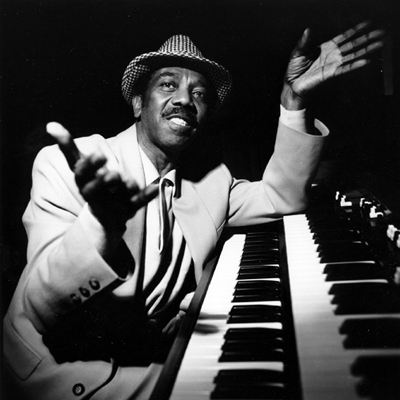 Any questions?
Yes, a few jazz musicians did play organ before Jimmy Smith. Notable among Jimmy’s predecessors were Fats Waller, Count Basie and Wild Bill Davis. In fact, legend has it that somewhere in the early fifties, James Oscar Smith (born 1925? In Norristown, PA — died February 8, 2005) heard Wild Bill and decided to tackle the organ.
Jimmy acquired an organ, rented out a spot to woodshed, and emerged a little over a year later to completely upset the jazz world. See, before Mr. Smith, believe it or not, the organ had a genteel sound—not the moaning, groaning, grunting, whooping and flat out hollering that is Mr. Smith familiar trademark. Indeed, when you listen to tracks recorded in the early years of jazz, you hardly recognize the sound as that of an organ.
Yes, Jimmy Smith did play piano. I’ve included one solo piano track (“Until It’s Time For You To Go”) so you can hear how well my man got around the keyboard. Jimmy certainly could have made it as a jazz pianist but Mr. Smith had other aspirations in mind.
Yes, there were a plethora of jazz organ players following Jimmy Smith, too many to name but none of those who came after ever surpassed Jimmy Smith. In jazz, the creator of a specific style is almost always eventually eclipsed. Louis Armstrong started the modern jazz trumpet tradition but Pops was challenged and eventually lapped by bebop trumpeter Dizzy Gillespie, who in turned was over turned by cool and modal champ Miles Davis. Coleman Hawkins started the tenor saxophone tradition but Hawk was not greater than John Coltrane. The same with drums and piano and bass, and any other instrument—except the organ.
From Larry Young to Joey DeFrancesco, there have been younger geniuses who have created remarkable music, but none of them have surpassed Jimmy Smith.
Some jazz purists can’t stand the sound of the organ. Why should we listen to Jimmy Smith and exactly what was it he did that is so important?
First of all, if you don’t like the sound of the Hammond organ you’re probably culturally deprived and came up in a Catholic family (LOL). Even moreso than the piano, the Hammond organ is the mainstay instrument of black Baptist church music, which is one of the reasons that Smith’s organ work was so popular in jazz circles. What Jimmy did was bring the blues to an instrument that most people in black culture associated with the church.
Any questions?
Yes, a few jazz musicians did play organ before Jimmy Smith. Notable among Jimmy’s predecessors were Fats Waller, Count Basie and Wild Bill Davis. In fact, legend has it that somewhere in the early fifties, James Oscar Smith (born 1925? In Norristown, PA — died February 8, 2005) heard Wild Bill and decided to tackle the organ.
Jimmy acquired an organ, rented out a spot to woodshed, and emerged a little over a year later to completely upset the jazz world. See, before Mr. Smith, believe it or not, the organ had a genteel sound—not the moaning, groaning, grunting, whooping and flat out hollering that is Mr. Smith familiar trademark. Indeed, when you listen to tracks recorded in the early years of jazz, you hardly recognize the sound as that of an organ.
Yes, Jimmy Smith did play piano. I’ve included one solo piano track (“Until It’s Time For You To Go”) so you can hear how well my man got around the keyboard. Jimmy certainly could have made it as a jazz pianist but Mr. Smith had other aspirations in mind.
Yes, there were a plethora of jazz organ players following Jimmy Smith, too many to name but none of those who came after ever surpassed Jimmy Smith. In jazz, the creator of a specific style is almost always eventually eclipsed. Louis Armstrong started the modern jazz trumpet tradition but Pops was challenged and eventually lapped by bebop trumpeter Dizzy Gillespie, who in turned was over turned by cool and modal champ Miles Davis. Coleman Hawkins started the tenor saxophone tradition but Hawk was not greater than John Coltrane. The same with drums and piano and bass, and any other instrument—except the organ.
From Larry Young to Joey DeFrancesco, there have been younger geniuses who have created remarkable music, but none of them have surpassed Jimmy Smith.
Some jazz purists can’t stand the sound of the organ. Why should we listen to Jimmy Smith and exactly what was it he did that is so important?
First of all, if you don’t like the sound of the Hammond organ you’re probably culturally deprived and came up in a Catholic family (LOL). Even moreso than the piano, the Hammond organ is the mainstay instrument of black Baptist church music, which is one of the reasons that Smith’s organ work was so popular in jazz circles. What Jimmy did was bring the blues to an instrument that most people in black culture associated with the church.
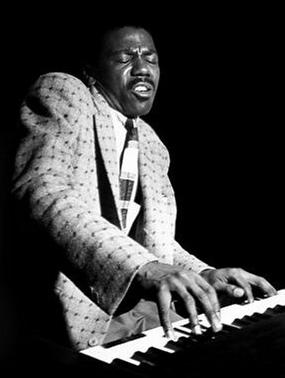 The sound Jimmy Smith created was like my man baptized the Hammond with a slop bucket of blues and commanded the instrument to get up and dance.
Second, Jimmy Smith brought a modern jazz sensibility to the instrument. In the fifties and sixties, Jimmy was playing with major jazz cats and producing a long, long string of Blue Note recordings that virtually define soul jazz of that era. Chief among Jimmy’s collaborators were guitarist Kenny Burrell and saxophonist Stanley Turrentine (“Midnight Special” was a major example of the tenor/organ combination), but there were many, many others including the modern jazz guitar master Wes Montgomery (“ ‘Round Midnight”).
The sound Jimmy Smith created was like my man baptized the Hammond with a slop bucket of blues and commanded the instrument to get up and dance.
Second, Jimmy Smith brought a modern jazz sensibility to the instrument. In the fifties and sixties, Jimmy was playing with major jazz cats and producing a long, long string of Blue Note recordings that virtually define soul jazz of that era. Chief among Jimmy’s collaborators were guitarist Kenny Burrell and saxophonist Stanley Turrentine (“Midnight Special” was a major example of the tenor/organ combination), but there were many, many others including the modern jazz guitar master Wes Montgomery (“ ‘Round Midnight”).
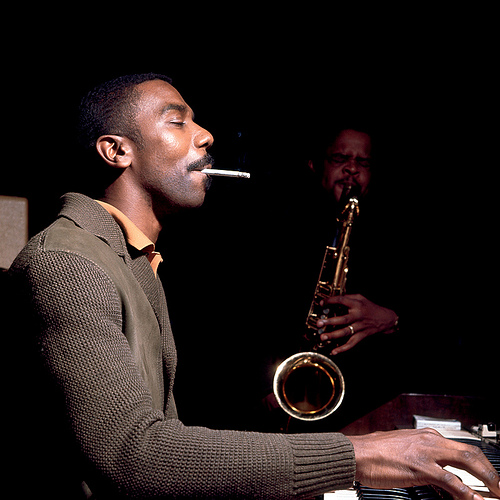 Third, Jimmy Smith figured out how to move from the outhouse to the penthouse. He did live recordings in small jazz joints working with a trio (organ, guitar & drums) and quartet (add a horn) during the Blue Note years and then in the Verve years worked in big band and orchestra settings to produce inspiring, jazz takes on popular music of the day, some of the selections were totally surprising but nonetheless also totally satisfying. “Walk On The Wild Side” is archetypal in that regard.
I remember when “Walk On The Wild Side” dropped, it was so popular, high school marching bands were performing the arrangement at football games. That’s right, marching bands playing an organ-led jazz hit. No, they didn’t use an organ but damn if it wasn't the Jimmy Smith version of the song.
Much of Jimmy Smith success in the big band format was due to the original and captivating work of arranger Oliver Nelson, who would go on to be an in demand composer and arranger in Hollywood for both film and television. Nelson knew how to use the full palette of orchestral sounds. Listen to the first half of this mixtape and marvel at the ingenious settings within which Jimmy Smith deftly drops huge dollops of funky organ.
I’m particularly taken with Nelson’s Coltrane-influenced voicings on “St. James Infirmary.” But then again, I can never resist rocking and rolling to Mr. Smith’s Muddy Water hijack of “Hoochie Coochie Man” with that blues harmonica threading throughout. And, oh yeah, that is Jimmy Smith singing the blues. You got to give it up—Jimmy Smith is a monster.
The combination of Jimmy Smith and Oliver Nelson was a thriller of the highest order. And in case you didn’t catch the inference, I should hasten to mention that in the third part of Jimmy Smith long and notable career, mainly the eighties and nineties, Jimmy Smith worked with some notable recording artists, artists whom you would never expect to be paired with Mr. Smith.
Artists like who, Kalamu? Well, let’s see, how’s about Frank Sinatra and Michael Jackson. Michael Jackson?!—you’ve got to be kidding me. No, Jimmy Smith is one of the players on Michael’s album Bad. In fact, Jimmy Smith has recorded so many albums as both a leader and a sideman that his complete discography is a book.
Jimmy Smith is the dominant and dominating voice of the jazz organ. He’s so far out front, there is no second, just a bunch of also-rans, some of whom, were it not for Jimmy Smith would be considered major jazz voices on the Hammond B3 organ. And so I repeat, in jazz no one else dominates their respective instrument the way Jimmy Smith does. Jimmy Smith is the monster and master of the Hammond B3 organ.
—Kalamu ya Salaam
Jimmy Smith Mixtape Playlist
Third, Jimmy Smith figured out how to move from the outhouse to the penthouse. He did live recordings in small jazz joints working with a trio (organ, guitar & drums) and quartet (add a horn) during the Blue Note years and then in the Verve years worked in big band and orchestra settings to produce inspiring, jazz takes on popular music of the day, some of the selections were totally surprising but nonetheless also totally satisfying. “Walk On The Wild Side” is archetypal in that regard.
I remember when “Walk On The Wild Side” dropped, it was so popular, high school marching bands were performing the arrangement at football games. That’s right, marching bands playing an organ-led jazz hit. No, they didn’t use an organ but damn if it wasn't the Jimmy Smith version of the song.
Much of Jimmy Smith success in the big band format was due to the original and captivating work of arranger Oliver Nelson, who would go on to be an in demand composer and arranger in Hollywood for both film and television. Nelson knew how to use the full palette of orchestral sounds. Listen to the first half of this mixtape and marvel at the ingenious settings within which Jimmy Smith deftly drops huge dollops of funky organ.
I’m particularly taken with Nelson’s Coltrane-influenced voicings on “St. James Infirmary.” But then again, I can never resist rocking and rolling to Mr. Smith’s Muddy Water hijack of “Hoochie Coochie Man” with that blues harmonica threading throughout. And, oh yeah, that is Jimmy Smith singing the blues. You got to give it up—Jimmy Smith is a monster.
The combination of Jimmy Smith and Oliver Nelson was a thriller of the highest order. And in case you didn’t catch the inference, I should hasten to mention that in the third part of Jimmy Smith long and notable career, mainly the eighties and nineties, Jimmy Smith worked with some notable recording artists, artists whom you would never expect to be paired with Mr. Smith.
Artists like who, Kalamu? Well, let’s see, how’s about Frank Sinatra and Michael Jackson. Michael Jackson?!—you’ve got to be kidding me. No, Jimmy Smith is one of the players on Michael’s album Bad. In fact, Jimmy Smith has recorded so many albums as both a leader and a sideman that his complete discography is a book.
Jimmy Smith is the dominant and dominating voice of the jazz organ. He’s so far out front, there is no second, just a bunch of also-rans, some of whom, were it not for Jimmy Smith would be considered major jazz voices on the Hammond B3 organ. And so I repeat, in jazz no one else dominates their respective instrument the way Jimmy Smith does. Jimmy Smith is the monster and master of the Hammond B3 organ.
—Kalamu ya Salaam
Jimmy Smith Mixtape Playlist
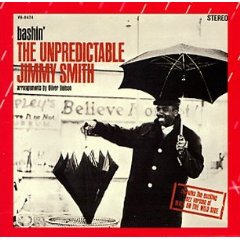 01 “Walk On The Wild Side” - Bashin'
02 “Ol' Man River” - Bashin'
01 “Walk On The Wild Side” - Bashin'
02 “Ol' Man River” - Bashin'
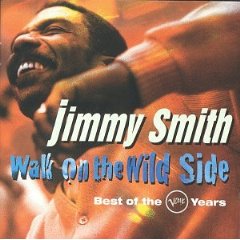 03 “St. James Infirmary” – Walk On the Wild Side: Best Of The Verve Years
03 “St. James Infirmary” – Walk On the Wild Side: Best Of The Verve Years
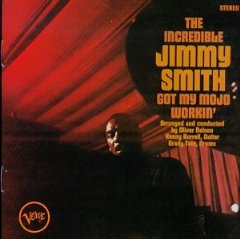 04 “I'm Your Hoochie Coochie Man” - Got My Mojo Workin’/Hoochie Coochie Man
05 “C Jam Blues” - Got My Mojo Workin’/Hoochie Coochie Man
04 “I'm Your Hoochie Coochie Man” - Got My Mojo Workin’/Hoochie Coochie Man
05 “C Jam Blues” - Got My Mojo Workin’/Hoochie Coochie Man
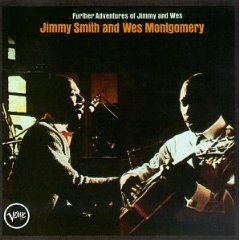 06 “ 'Round Midnight” - Further Adventures Of Jimmy And Wes
07 “Got My Mojo Working” - Got My Mojo Workin’/Hoochie Coochie Man
06 “ 'Round Midnight” - Further Adventures Of Jimmy And Wes
07 “Got My Mojo Working” - Got My Mojo Workin’/Hoochie Coochie Man
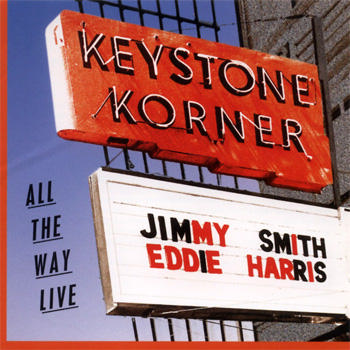 08 “8 Counts For Rita” - All The Way Live
08 “8 Counts For Rita” - All The Way Live
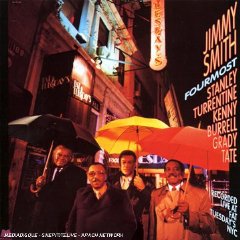 09 “Quiet Nights Of Quiet Stars” – Fourmost
09 “Quiet Nights Of Quiet Stars” – Fourmost
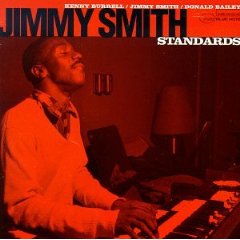 10 “I'm Just A Lucky So And So” – Standards
10 “I'm Just A Lucky So And So” – Standards
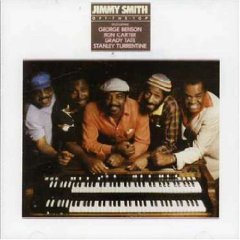 11 “Ain't Misbehavin' ” - Off The Top
12 “Theme From M.A.S.H. (Suicide Is Painless)” - Off The Top
13 “Until It's Time For You To Go” - Unfinished Business
11 “Ain't Misbehavin' ” - Off The Top
12 “Theme From M.A.S.H. (Suicide Is Painless)” - Off The Top
13 “Until It's Time For You To Go” - Unfinished Business
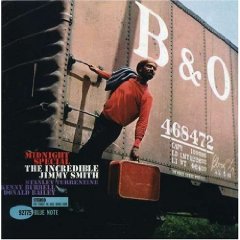 14 “Midnight Special” - Midnight Special
15 “One O'Clock Jump” - Midnight Special
14 “Midnight Special” - Midnight Special
15 “One O'Clock Jump” - Midnight Special
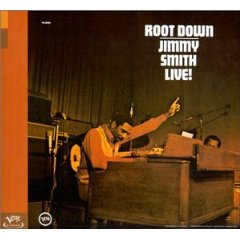 16 “After Hours” - Root Down - Live!
16 “After Hours” - Root Down - Live!
This entry was posted on Monday, September 21st, 2009 at 2:24 am and is filed under Classic. You can follow any responses to this entry through the RSS 2.0 feed. You can leave a response, or trackback from your own site.
2 Responses to “JIMMY SMITH / “Jimmy Smith Mixtape””
September 23rd, 2009 at 1:49 am
Whow Jimmy Smith… Haven’t listen in a long time, but boy did that guy mastered the sound. I played it so much I worn out some player on that thing. (lol) I don’t know how many, many times I played Midnight Special. Always sweet music in here.
I have aremark for you, Mtume. Since I like your prose a lot, but I rarely have the time to go through it, would you think about recording it as a podcast so that I could listen to your words while driving in the morning ? That and the music on the side would be truly Fantastic !
Tahnks again, Clément.
Leave a Reply
| top |